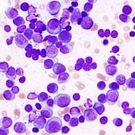Detection Of Rapidly Dividing Plasma Cells May Lead To More Targeted Treatment For Multiple Myeloma Patients

A recent study demonstrated that it is possible to identify multiple myeloma patients with a poor prognosis, based on the presence of rapidly dividing, or proliferating, cancerous cells. Classifying rapidly dividing myeloma cells as a prognostic factor may help patients receive more targeted treatment, especially as anti-proliferative drugs become available.
“Proliferation has long been known to be an adverse prognostic factor in myeloma, but it is quite laborious to measure it in the laboratory, and is thus not routinely measured in the large European trial groups,” explained Dr. Dirk Hose, lead author of the study, in correspondence with The Myeloma Beacon. His study showed that a procedure called gene expression profiling could help identify patients with rapidly growing plasma cells.
Factors that are currently used to differentiate multiple myeloma patients based on disease prognosis include the International Staging System (ISS), beta-2 microglobulin, lactate dehydrogenase (LDH), and chromosomal abnormalities.
The ISS is used to categorize patients’ disease statuses as stage I, stage II, or stage III. Each stage is given a median survival time. Stage I has a median survival time of 62 months, stage II is 44 months, and stage III is 29 months (see related Beacon news).
The ISS is based primarily on the serum beta-2 microglobulin test. High levels of beta-2 microglobulin, a protein found on the surface of white blood cells, indicate greater disease progression (see related Beacon news).
Measurement of LDH levels is another common blood test. LDH is a molecule present in the blood when tissues in the body are damaged. Higher levels of LDH indicate a poorer prognosis (see related Beacon news).
Multiple myeloma is also associated with chromosomal abnormalities, which evolve with disease progression. Specifically, the chromosomal abnormalities del(13), t(4;14) or del(17p) are associated with a poorer prognosis in response to traditional chemotherapy (see related Beacon news).
Rapid cell growth has never been used as a prognostic factor in a large patient study because it was assumed that the conventional prognostic factors described above were able to account for all possible prognosis groups.
In this study, researchers were the first to demonstrate that a procedure called gene-expression profiling can be used to determine the growth of patient myeloma cell samples in a clinical setting. They showed the importance of rapid cell growth as a prognostic factor and identified a patient group that may have previously been overlooked using conventional prognostic factors.
Two groups of 298 and 345 previously untreated, newly diagnosed multiple myeloma patients were studied. Myeloma cell samples obtained from patients were assessed for rapid cell growth using genetic profiling.
Of the two groups, 43.3 percent and 39.4 percent of myeloma cell samples had higher cell growth rates than normal plasma cells.
Myeloma cells from patients in advanced stages of disease or patients with the chromosomal abnormalities 1q21 gain or del(17p) had significantly higher cell growth rates. Patients with gains of chromosome 9, 15, or 19, however, had significantly lower cell growth rates.
Rapid cell growth was significantly predictive for event-free and overall survival in both patient groups and also allowed for risk differentiation. Patients with more rapidly growing cells had lower overall and event-free survival rates and were considered a high-risk group. The associated risk was found to be independent of conventional risk factors such as serum beta-2 microglobulin, ISS-stage, and high-risk associated chromosomal abnormalities.
Based on their findings, the authors suggested that detection of cell growth should be used in clinical settings. They indicated that rapid cell growth is a prognostic factor that can allow for targeted and more personalized treatment.
Rapid cell growth can be stopped or slowed using anti-proliferative drugs that disrupt cell division. “We hope that the use of an additional anti-proliferative (add-on) treatment would overcome the adverse prognosis of patients with (highly) proliferating myeloma cells,” stated Dr. Hose.
Dr. Hose and his team are developing a novel anti-proliferative drug known as ELR510444 that has been shown to be active for myeloma in preclinical trials. “We hope to begin a Phase 1/2 trial in the fall of next year.”
For more information, please see the study in Haematologica (pdf).
Related Articles:
- None Found

